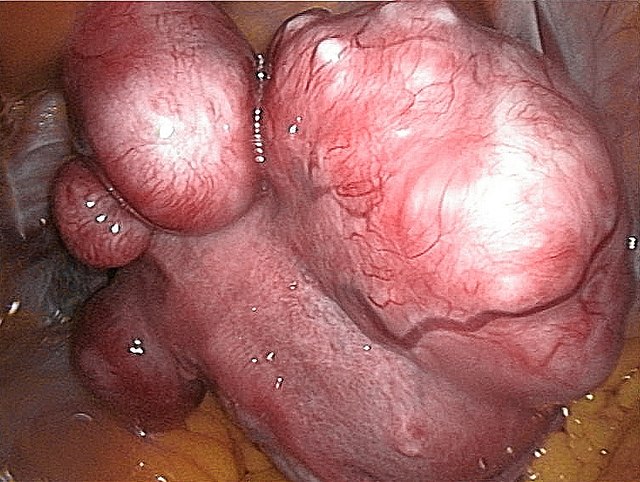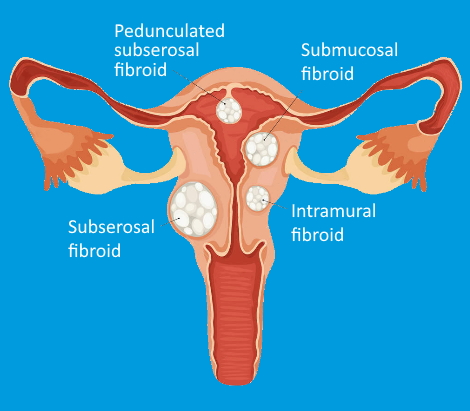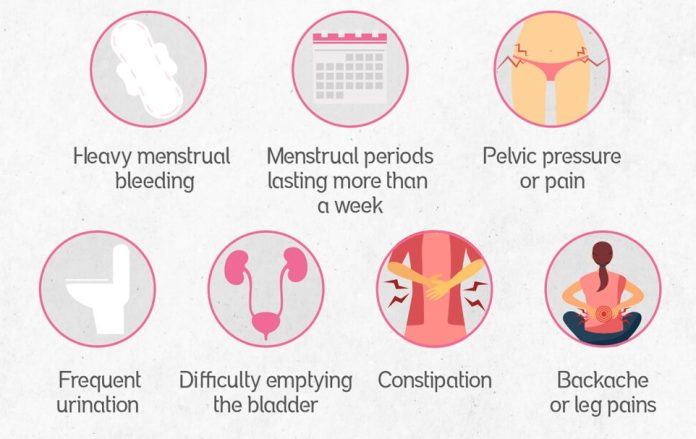According to the online health portal, Mayo Clinic, fibroids, also known as uterine leiomyomas, are non-cancerous growths in or around the uterus.
These growths are made up of muscle and fibrous tissue and can vary in size from very small to large enough to distort the shape of the uterus.
In some cases, there may be a single fibroid, but more commonly, there are multiple growths.

Fibroids can develop inside the uterus, outside the uterus, or within the uterine wall. They are quite common, with up to 70% of women developing fibroids at some point in their lives, according to a research result on Pubmed Central, and are most commonly diagnosed in women aged 30-40 years old.
Fibroids can cause a range of symptoms, depending on their size and location, including heavy or prolonged menstrual bleeding, pelvic pain and pressure, frequent urination, and constipation.
In some cases, fibroids may not cause any symptoms at all and may only be discovered during a routine gynaecological exam. Dr. Michelle Louie, a minimally invasive gynaecologic surgeon, says, “Many women who have fibroids don’t have any symptoms at all,” underscoring the importance of regular medical checkups.
In some cases, fibroids may not cause any symptoms at all and may only be discovered during a routine gynaecological exam
Treatment options for fibroids can vary, depending on the severity of symptoms and the size and location of the growths. Treatment options include medication, non-invasive procedures, and surgery, experts say.
Types of fibroids

The most common type of fibroids is intramural fibroids, which grow within the muscular walls of the uterus.
Subserosal fibroids grow on the outer surface of the uterus, while submucosal fibroids grow just under the lining of the uterus. Pedunculated fibroids are attached to the uterus by a stalk and can grow either on the inside or outside of the uterus.
Risk factors for fibroids
While the exact cause of fibroids is not fully understood, several risk factors are believed to increase a woman’s chances of developing fibroids.
According to the National Institute of Child Health and Human Development, these factors include:
Age is a significant risk factor, with fibroids becoming more common as women approach menopause.
Family history is also important, as women with a mother or sister who has had fibroids are more likely to develop it.
Obesity is another risk factor. Women who are overweight or obese are at a higher risk of developing fibroids. This is because fat cells can produce estrogen, which can stimulate the growth of fibroids.
Race is also a factor, with Black women being at a higher risk of developing fibroids than women of other races.
Other risk factors for fibroids include early onset of menstruation, a diet high in red meat and low in green vegetables, and the use of certain birth control methods.
Symptoms of fibroids
Women who suffer from fibroids may experience a variety of symptoms, and the severity of these symptoms can differ from person to person, physicians warn. Some women may not even realize they have fibroids until they get an ultrasound, while others may experience significant discomfort such as:
• heavy menstrual bleeding
• pelvic pain
• painful intercourse
• abdominal bloating
• difficulty getting pregnant
• urinary difficulties
It’s important to note that not all women with fibroids will experience symptoms. However, If you are experiencing any of the above symptoms, it’s important to talk to your doctor.
Treatment options for fibroids

Experts at the University of California San Francisco Health say treatment for fibroids can range from no treatment at all to as serious as surgeries. “Unless fibroids are causing excessive bleeding, discomfort or bladder problems, treatment usually isn’t necessary,” the UCSF says.
However, if you’re living with fibroids, your physician will discuss the treatment options with you, to enable you to make informed decision.
Conclusion
Women who experience symptoms such as heavy or prolonged periods, pelvic pain, or difficulty getting pregnant should consult with their healthcare provider for an accurate diagnosis and treatment plan.


